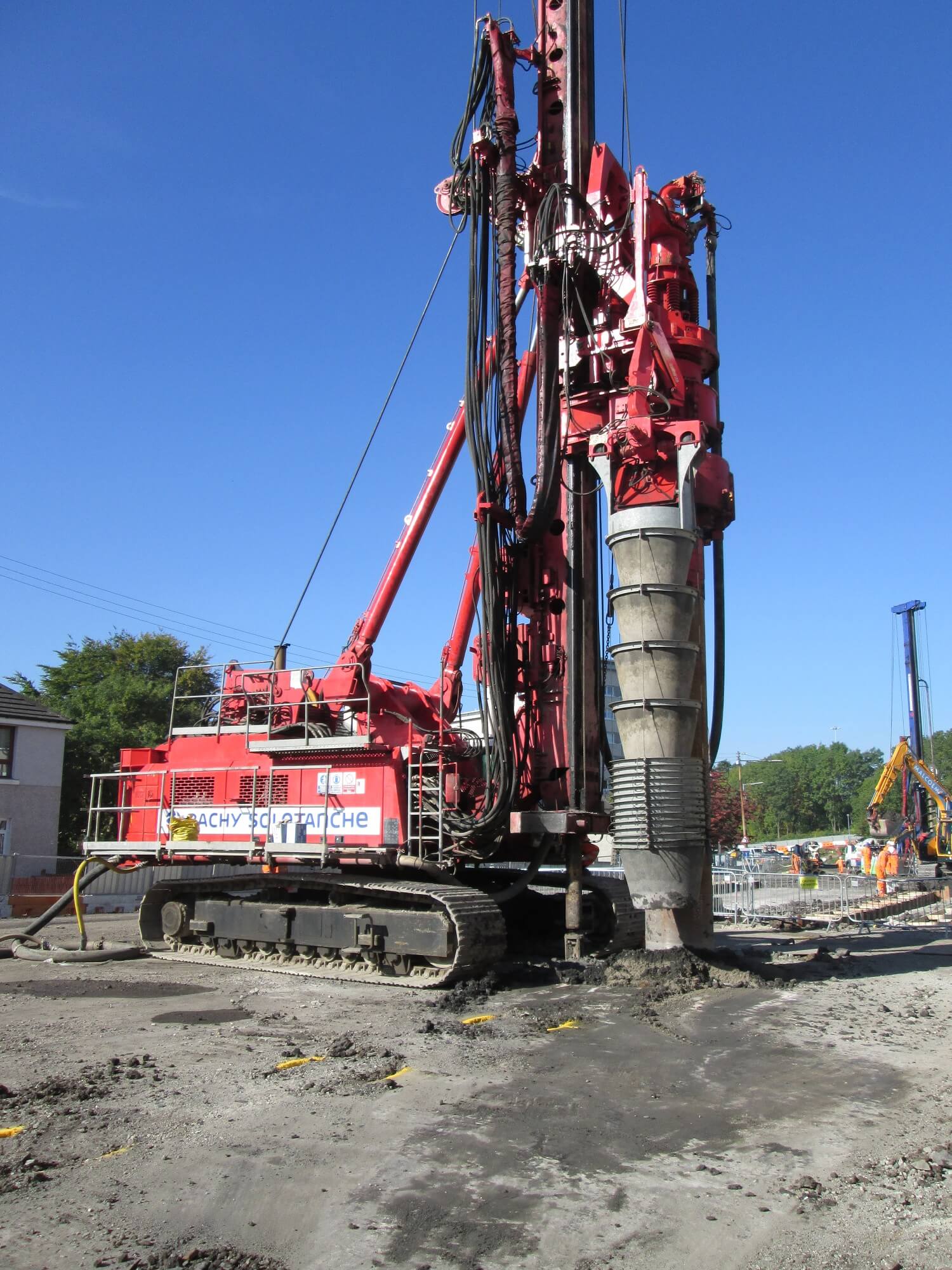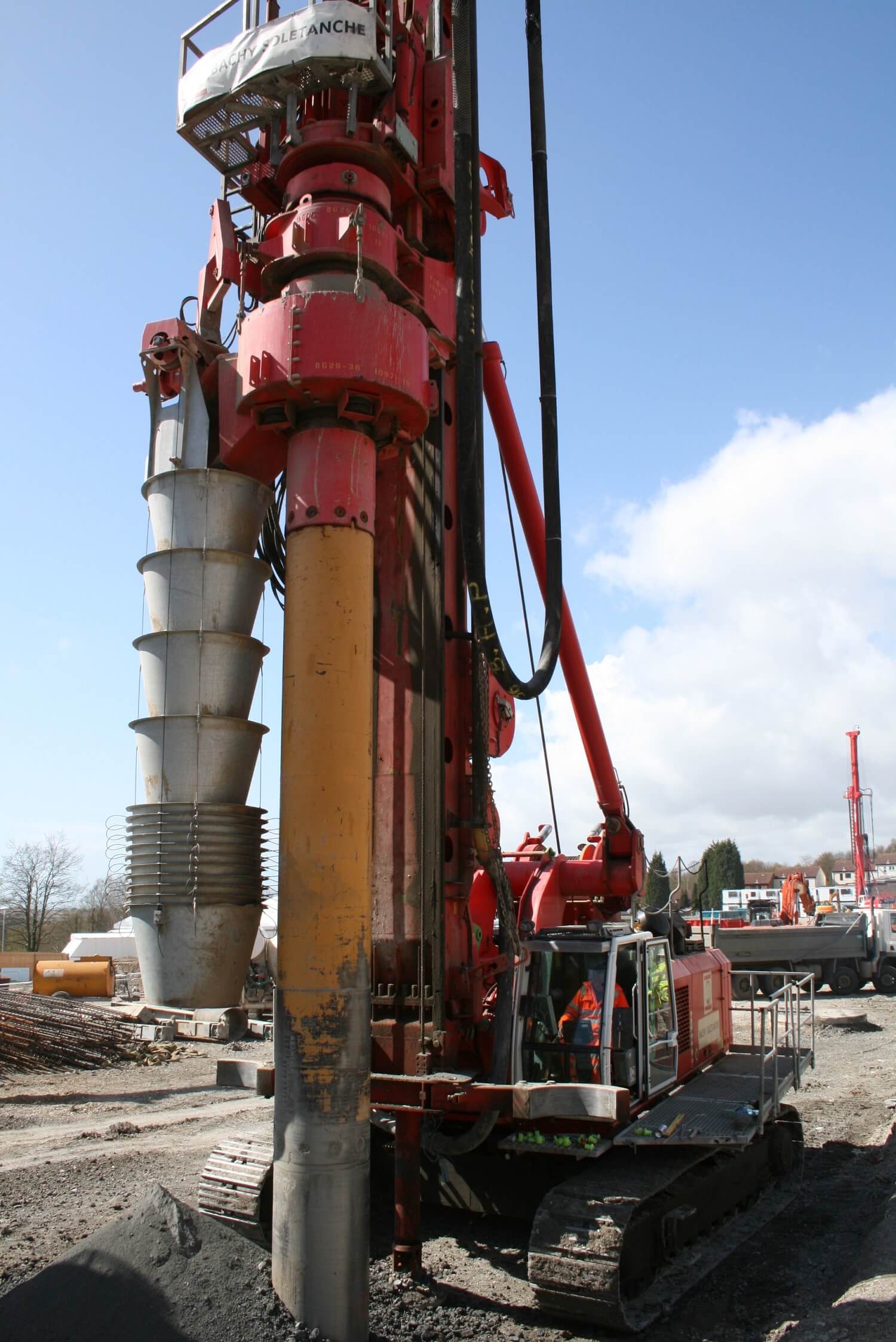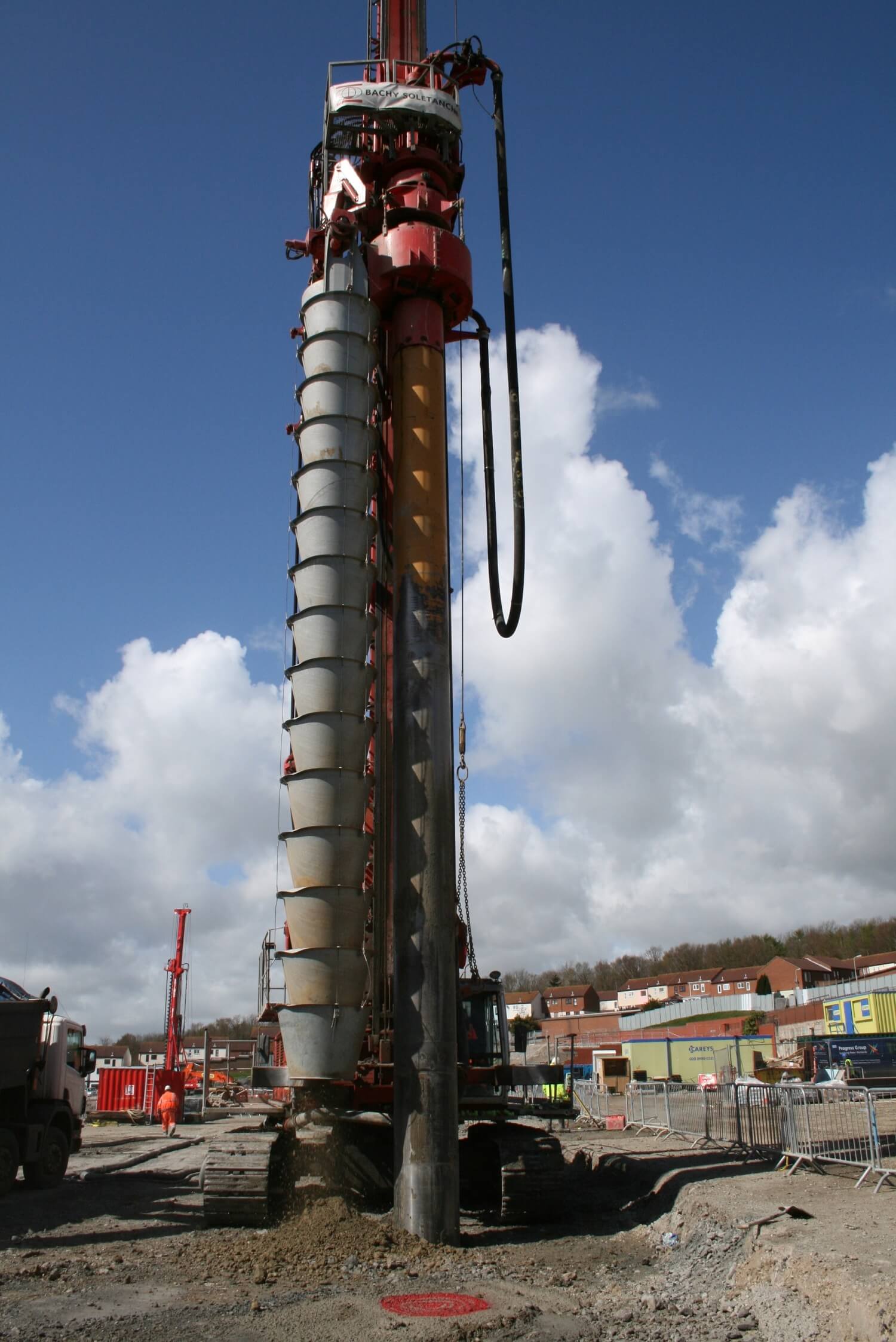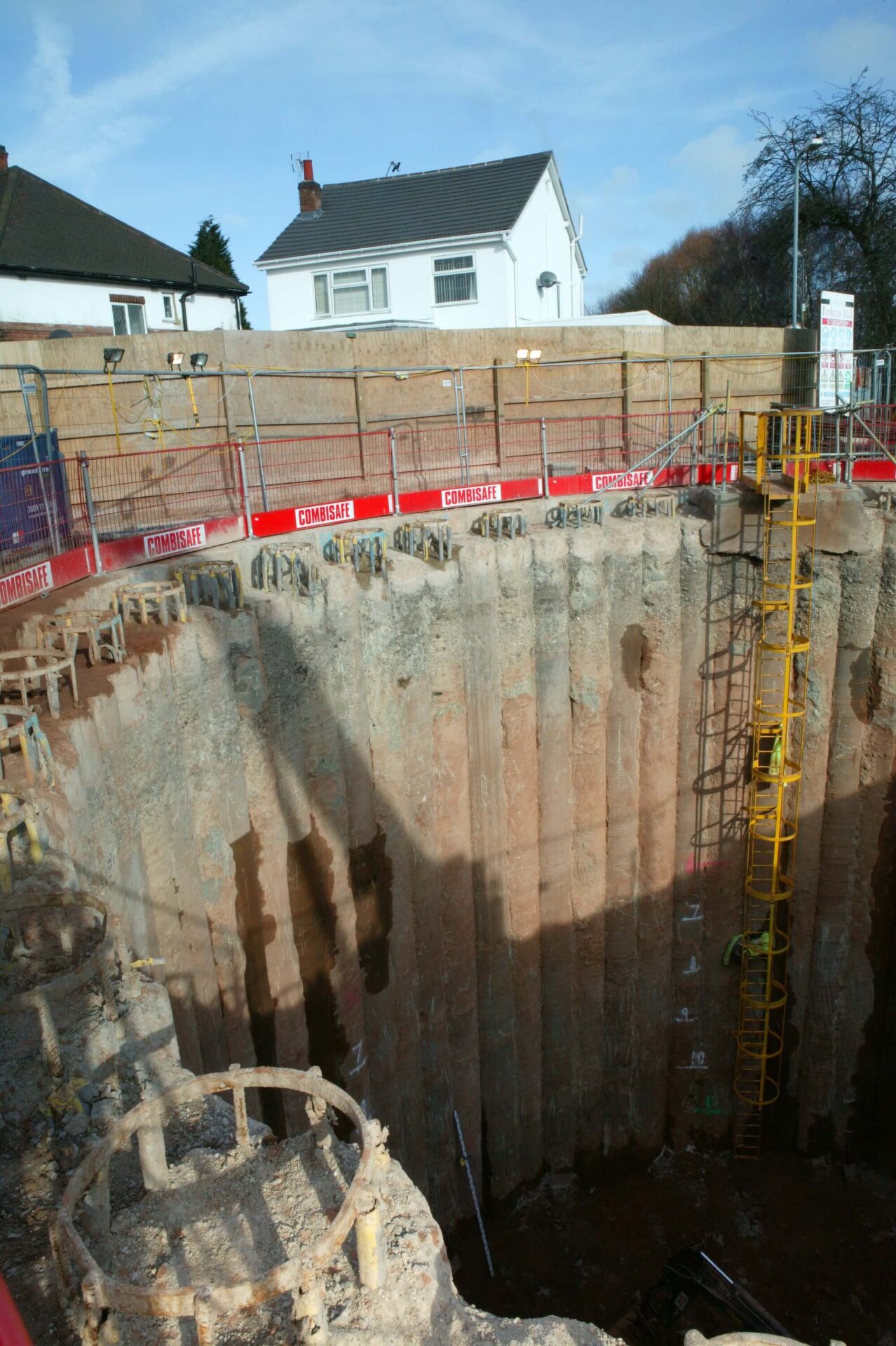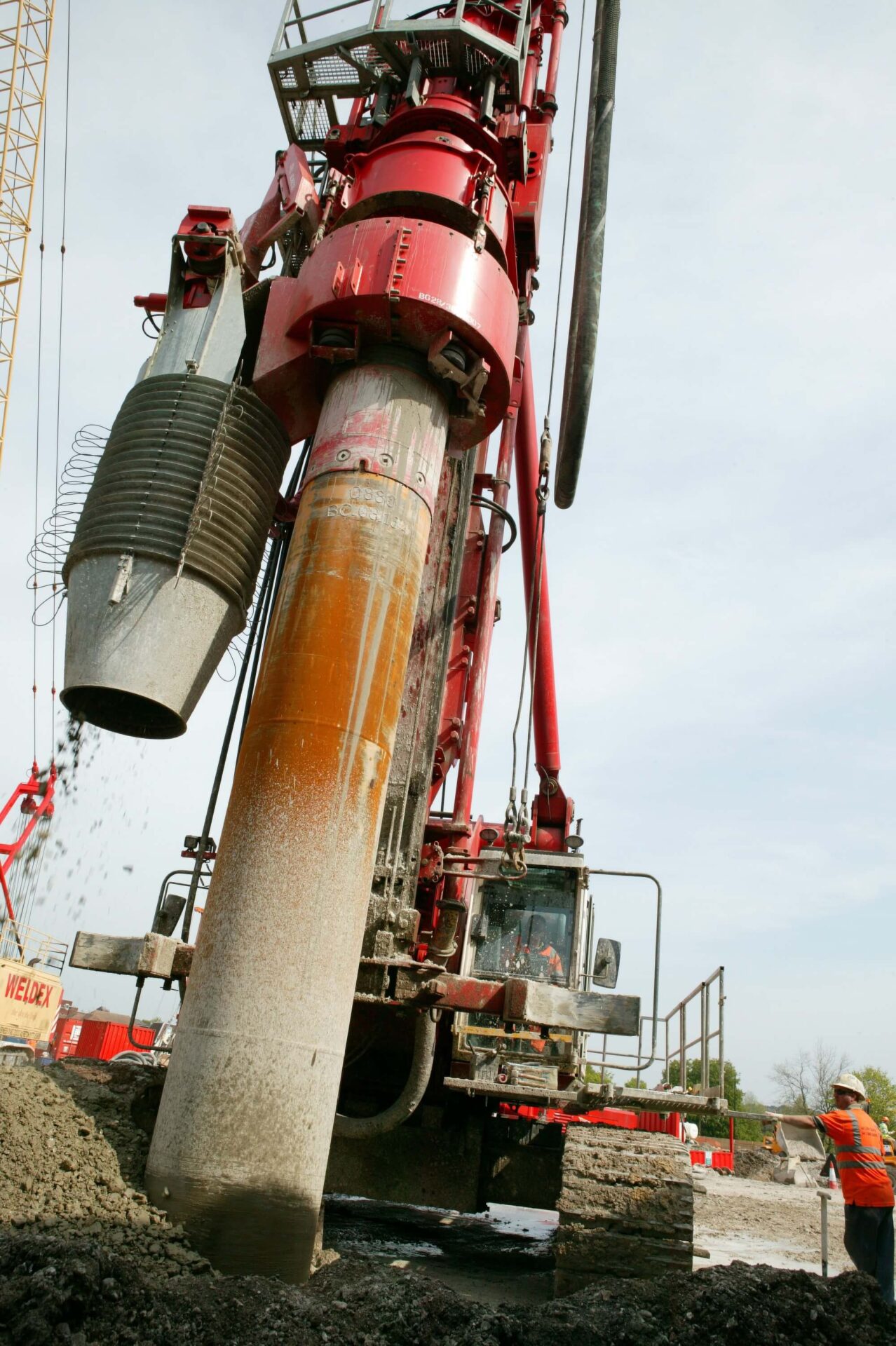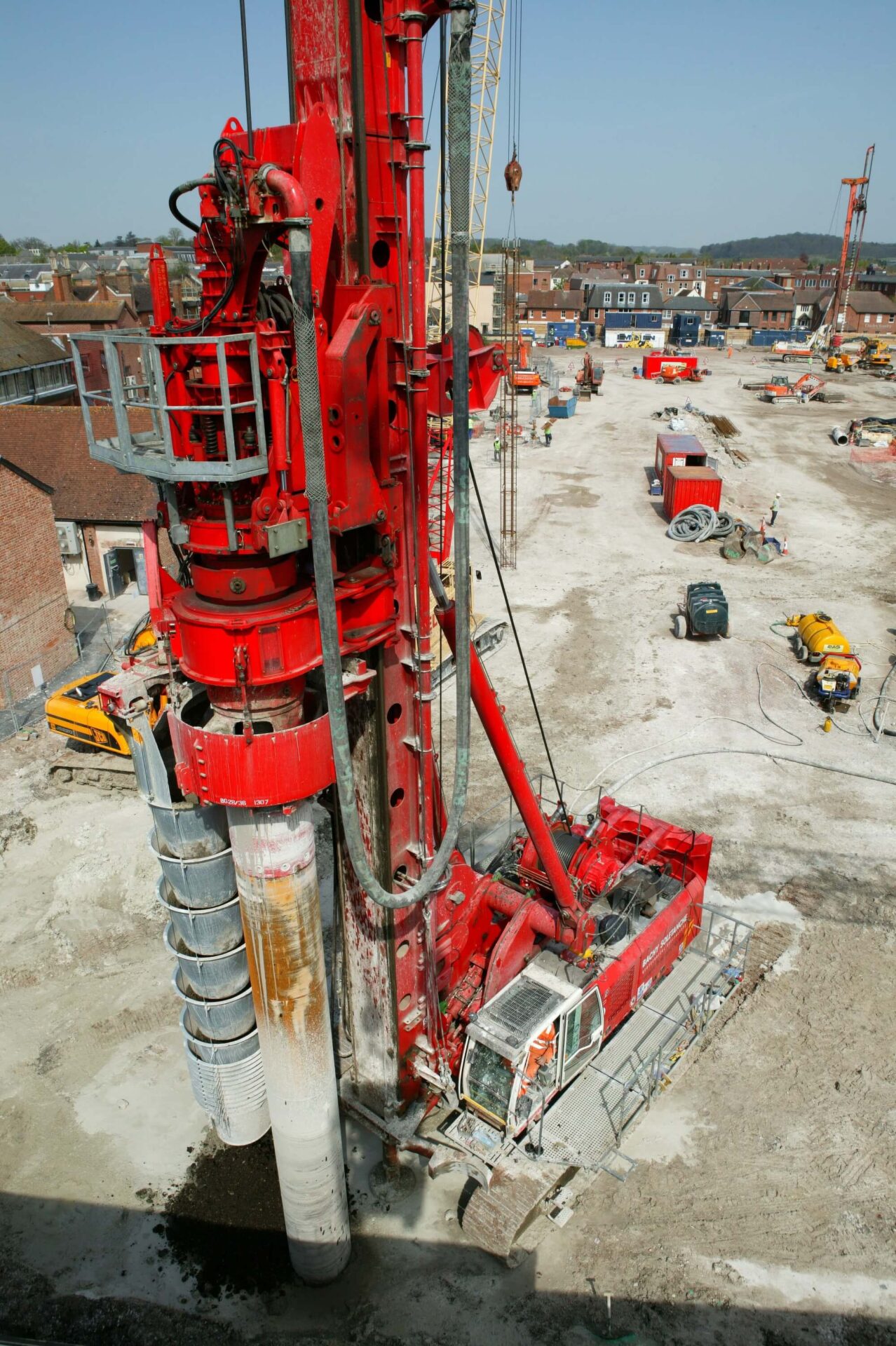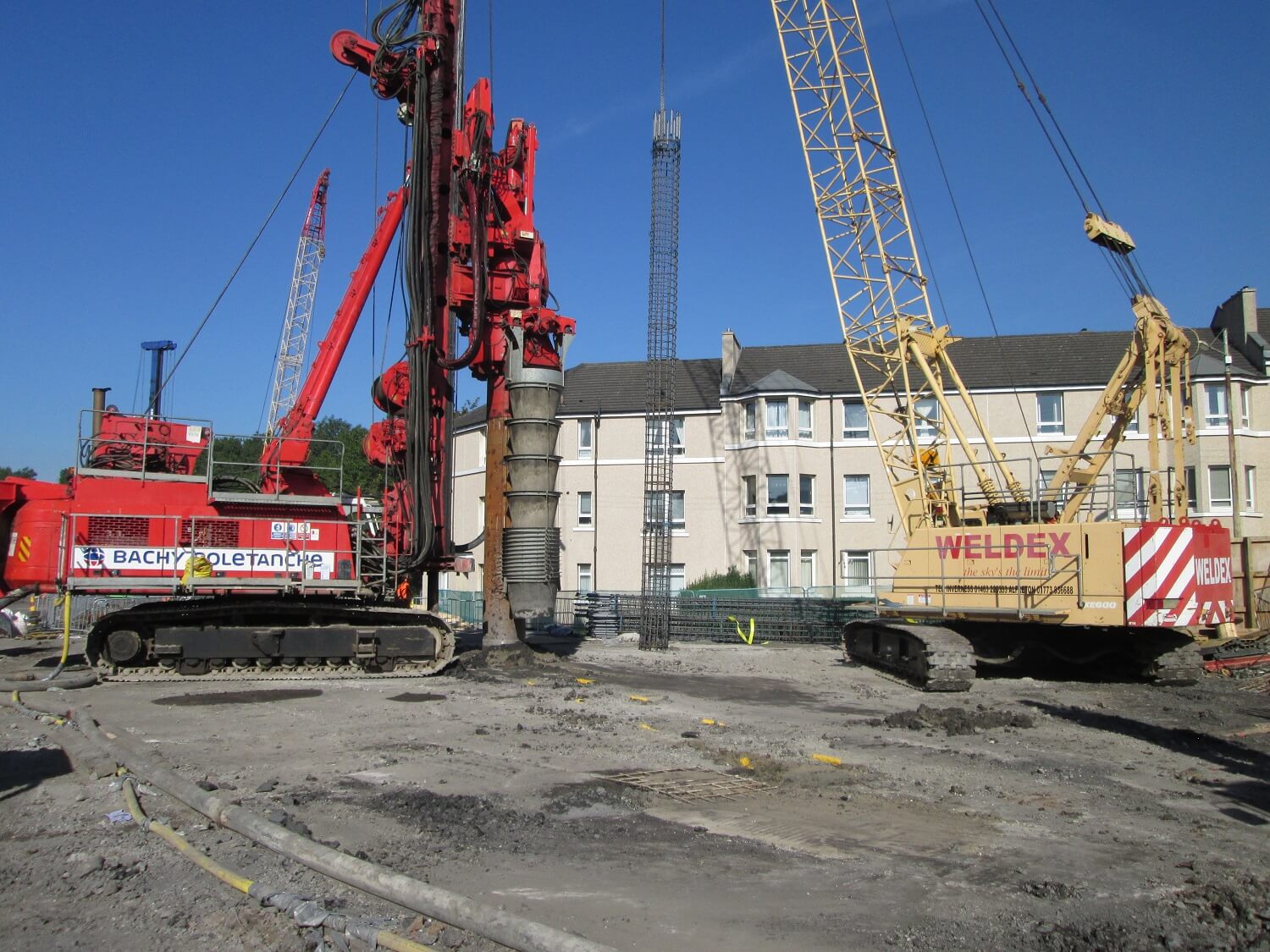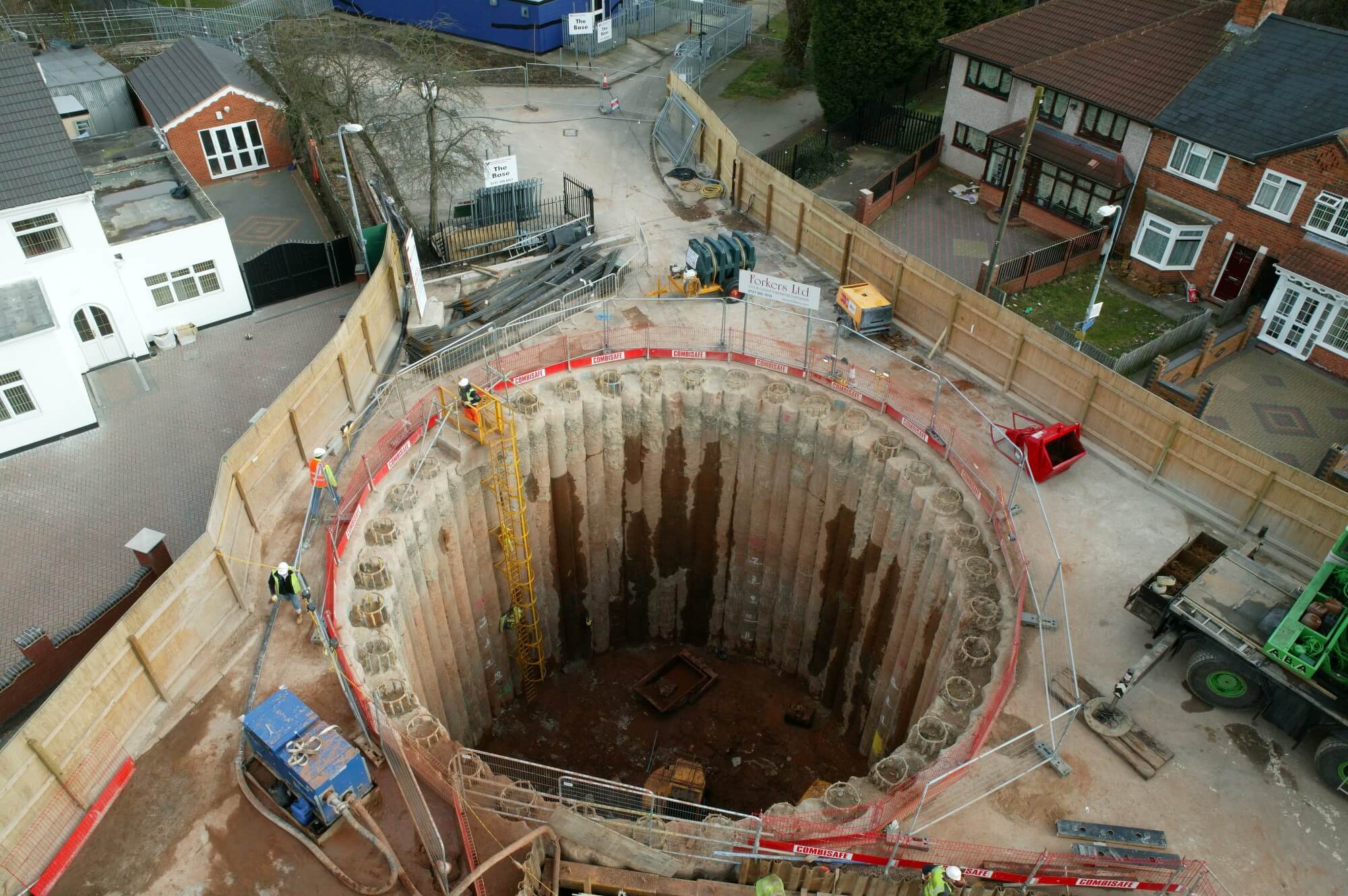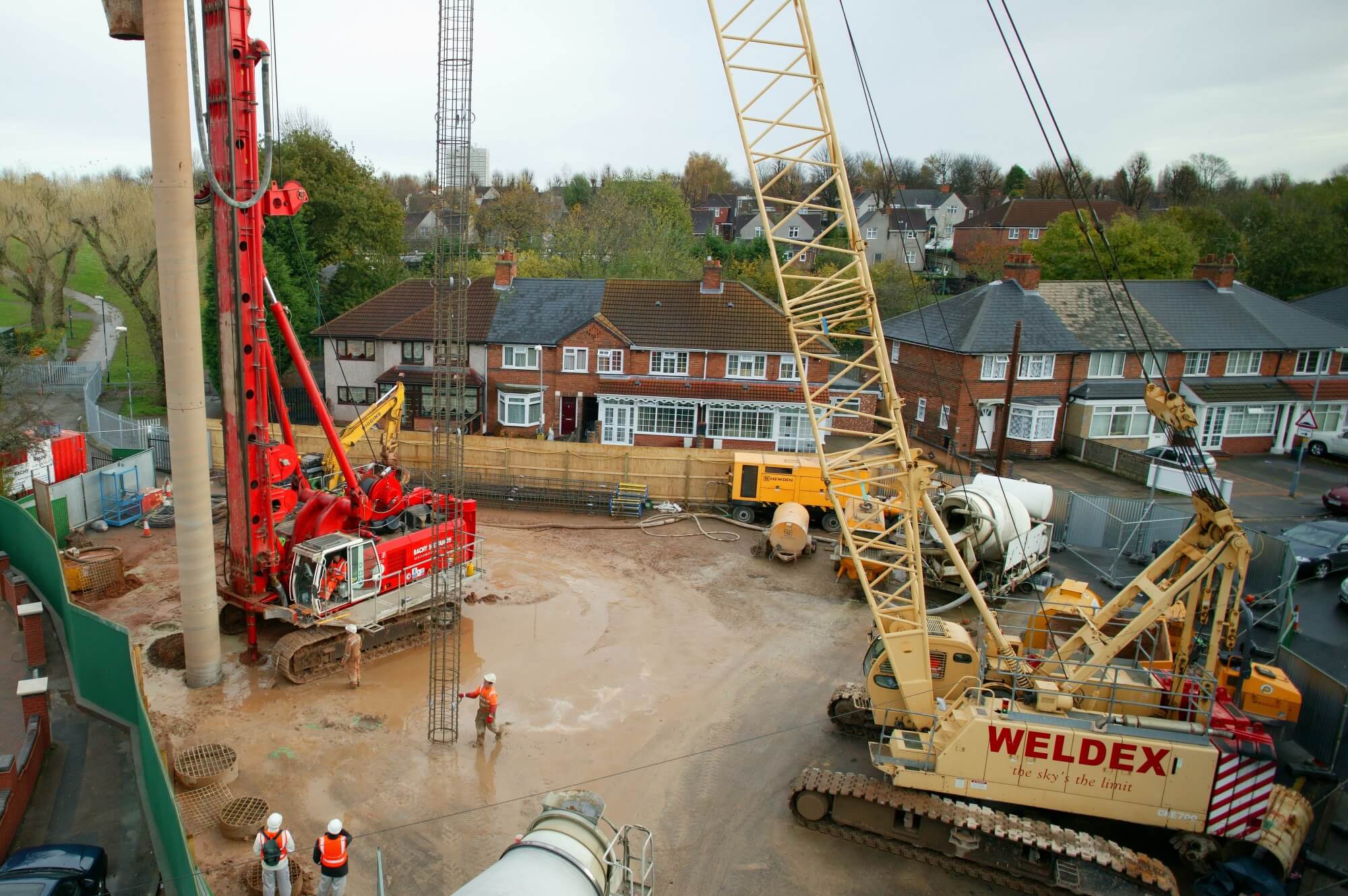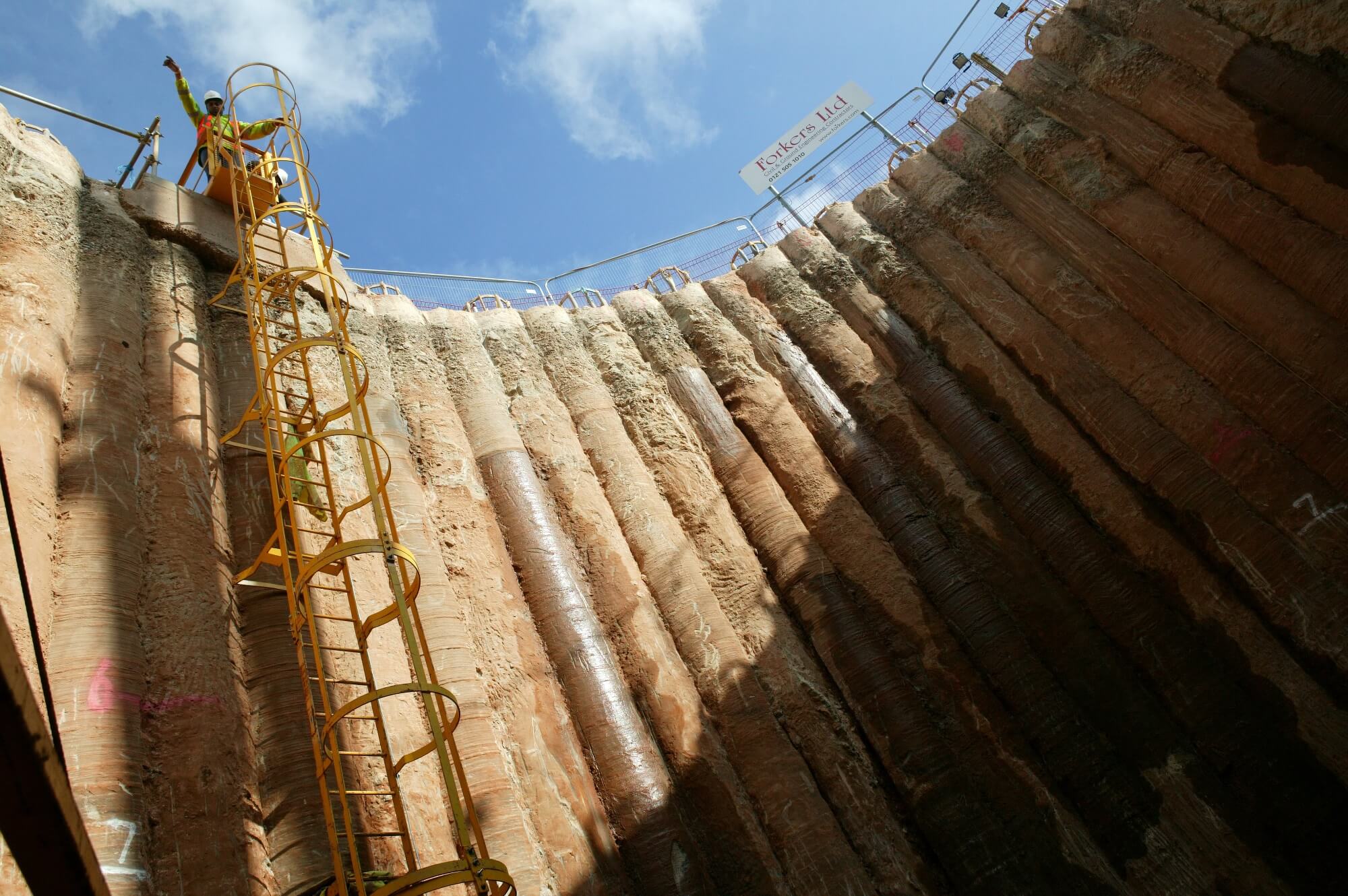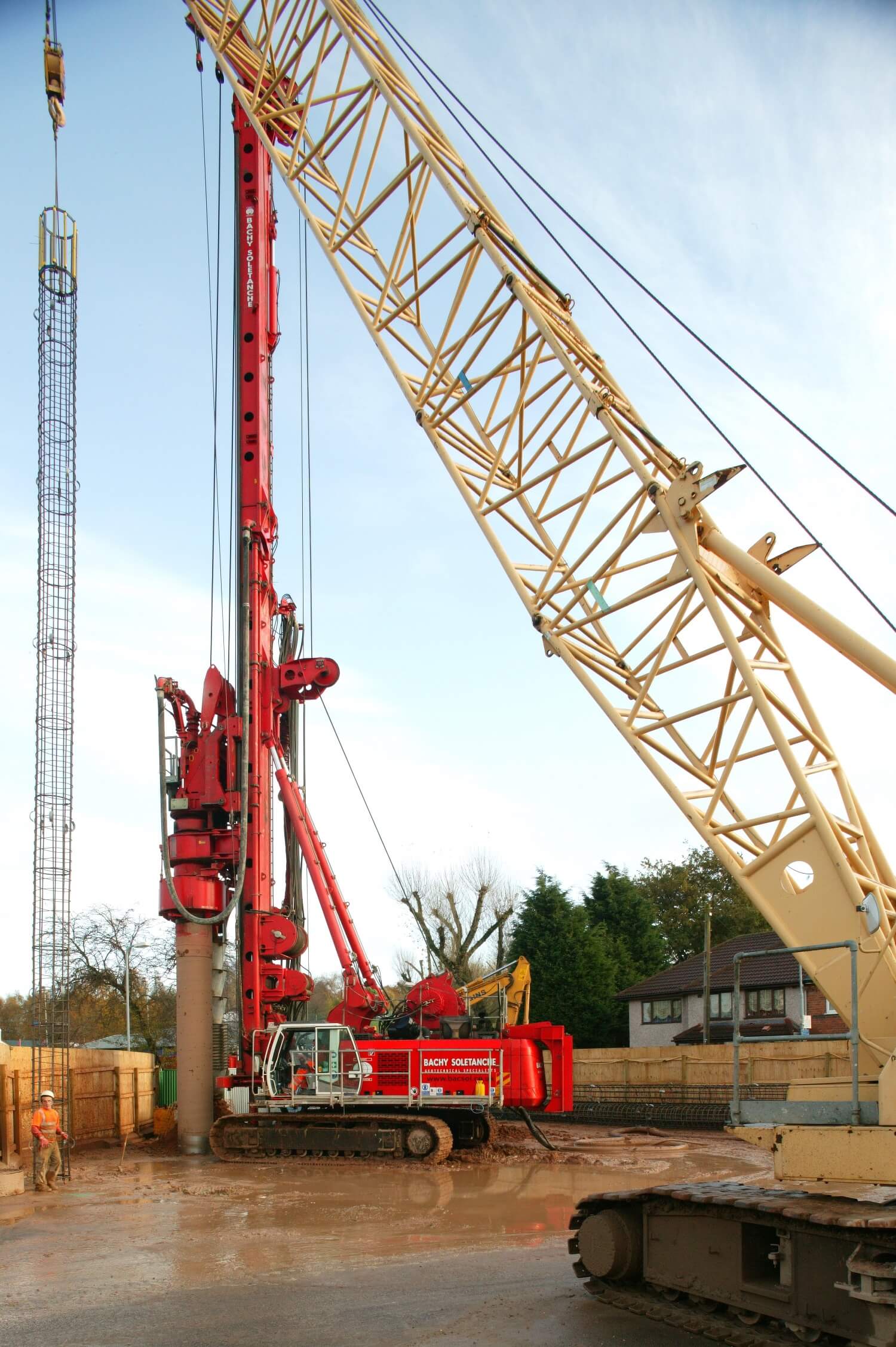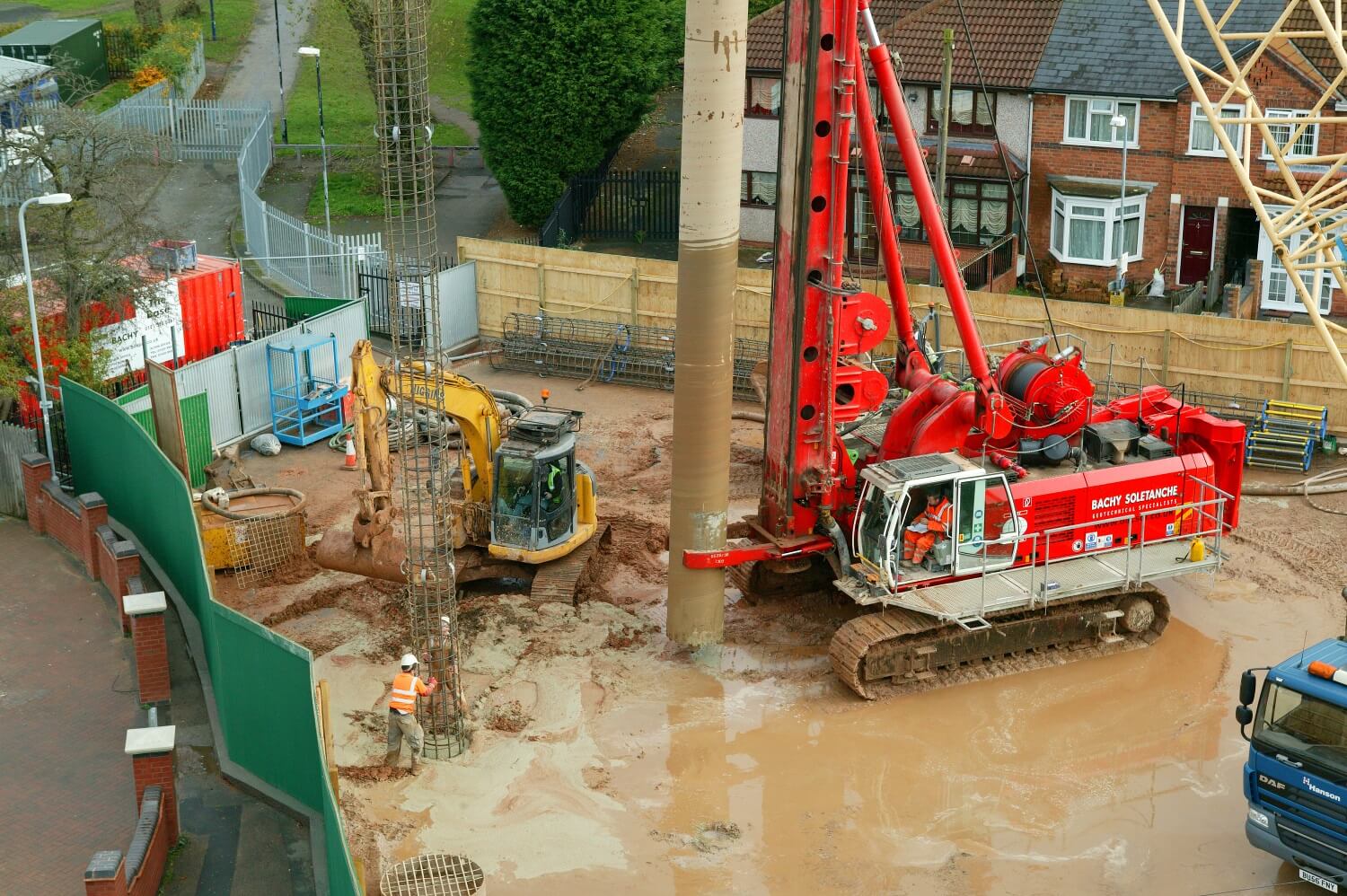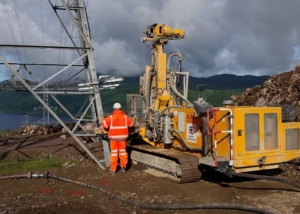The Cased Secant Piling (CSP) system has been developed to combine the more cost-effective CFA technique with heavy duty casings that are more traditionally associated with rotary bored piling methods. The CSP method can be used to construct deep secant or contiguous piled walls depending on the actual ground conditions and water table.
HOW IT WORKS:
CSP piles are constructed by drilling hollow stem augers encased within a string of casing to the required depth. A twin rotary drive system rotating in opposite directions allows soils extraction and casing installation simultaneously. The leading casing and auger are armed with tungsten tipped cutting teeth which means the system is suitable for constructing piles in hard soils. Piles arisings are removed from the top of the auger and brought down to ground level via a chute acting as a safe system of work. The pile is then concreted using the normal CFA technique of pumping concrete through the auger stem under pressure in a controlled manner as the auger returns to ground level all of which is monitored inside the rig cabin by computer (capturing the same level of detail collected using the CFA system) in order to maintain quality. At this point the steel reinforcement cage is plunged into the concrete.
Whilst the process does have limitations with respect to diameter and depth, it will generally give a better assured product in terms of vertical tolerance and visual appearance. As it is a cased system and almost vibration free it reduces the risk of distress to adjacent structures in certain soils like sands or gravels for which it is particularly suitable. Cased CSP has the methodology to be used as bearing piles, through its effectiveness of drilling through rock.
Capability: Depending upon ground conditions, we can drill to 750mm, 880mm, 1000mm and 1,200mm casings, up to 25m depth.
Advantages: With CSP, there is better vertical tolerance than an uncased CFA secant wall; better ultimate appearance, and reduced overbreak compared to an uncased CFA secant wall. In addition, it is quicker than kelly/casing rotary bored pile methods and reduces the risk of ‘flighting’ in poor soils, makes it suitable for use next to sensitive structures such as tunnels.
